<Back to Index>
- Mathematician Heinrich Martin Weber, 1842
- Mathematician William Burnside, 1852
- Mathematician Walther Franz Anton von Dyck, 1856
PAGE SPONSOR
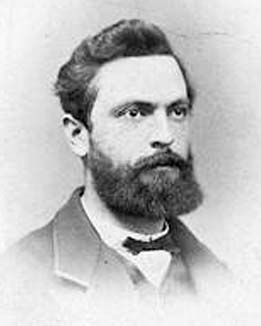
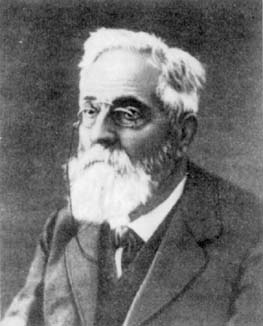
Heinrich Weber was born in Heidelberg, the son of G Weber who was an historian. He entered the University of Heidelberg in 1860 but, as was the common practice of German students at this time, he spent part of his time studying at a different university. For Weber it was the University of Leipzig that he moved to in the middle of his studies, spending a year there before returning to Heidelberg to complete his education. He was awarded a doctorate from the University of Heidelberg in 1863.
In order to become a university teacher, Weber needed to write a further thesis, his habilitation thesis. He went to Königsberg where he studied under Franz Neumann and Friedrich Richelot, who had been a student of Jacobi. Although Jacobi had died over ten years before Weber began his studies at Königsberg, his influence was still strongly felt and it would not be unreasonable to say that Weber, through his teachers at Königsberg, was strongly influenced by Jacobi's style of mathematics. There were other students at Königsberg at this time who would become important in the development of mathematics, in particular Wangerin studied for his doctorate around the same time as Weber worked for his habilitation.
In 1866 Weber's habilitation thesis was accepted and he became a privatdozent at Heidelberg in that year. Three years later he was appointed as extraordinary professor at Heidelberg. Over the next twenty - five years, Weber taught at a number of different institutions. He taught in Zurich at the Eidgenössische Polytechnikum, at the University of Königsberg and at the Technische Hochschule in Charlottenburg. His final post was in Strasbourg where he was appointed in 1895.
The city of Strasbourg was German at this time (and called Strassburg) and it had been since it was annexed by Germany during the Franco - German War of 1870 - 71. Weber remained in Strasbourg for the rest of his life and during this time it remained a German city; only at the end of the World War I in 1918 did the city revert to France
Weber's main work was in algebra, number theory, analysis and applications of analysis to mathematical physics. This seems a contradiction in terms, for we have now almost said that Weber's main work spans the whole spectrum of mathematics. In fact this is not far from the truth for Weber work was characterized by its breadth across a wide range of topics.
To a certain extent this breadth can be attributed to the various influences on Weber from colleagues around him. The applications to mathematical physics certainly grew from working with Franz Neumann in Königsberg. But in Königsberg there was also the Jacobi influence, particularly coming through one of his other teacher Friedrich Richelot, which saw Weber doing important work on algebraic functions.
Perhaps Weber is best known for his outstanding text Lehrbuch der Algebra published in 1895 and it is his work in algebra and number theory for which he is best known. If he was influenced by his colleagues to work in different areas of mathematics then it is a very fair question to ask where the influence came from which prompted Weber to work on algebra and number theory. The answer must be Dedekind. He wrote an important paper with Dedekind in 1882 in which they examined algebraic functions from an algebraic rather than analytic point of view.
Weber's Lehrbuch der Algebra is an outstanding work but, although he tried hard to connect the various algebraic theories, even fundamental concepts such as a field and a group are only seen as tools and not properly developed as theories in their own right. It was, however, a remarkable book which was effective over many years as a teaching tool. In fact:-
Weber was an enthusiastic and inspiring teacher who took great interest in educational questions.
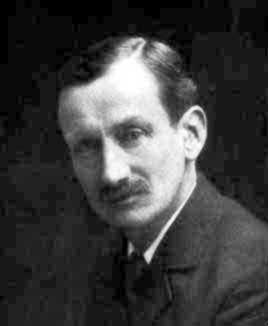
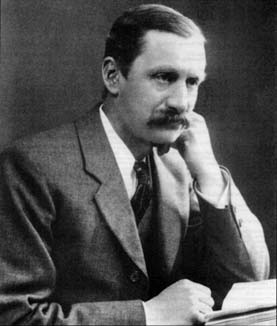
William Burnside's parents were Emma Knight and William Burnside. William Burnside Senior was of Scottish ancestry, his grandfather having moved from Scotland to London where he was a partner in the booksellers Seeley and Burnside. William Burnside Senior was a merchant who lived at 7 Howley Place, Paddington, where William, the elder of his parents two sons, was born. However, by the age of six Willian was an orphan:-
Burnside was educated at Christ's Hospital - then situated in Newgate Street - and achieved distinction in both the grammar school and the mathematical school.
Christ's Hospital was a school which took in boys whose parents were unable to pay the fees for a boarding school, so it was particularly appropriate for an orphan like Burnside. He entered St John's College, Cambridge, in October 1871 having won a scholarship. In 1873 he moved from St John's College to Pembroke College, not for academic reasons but rather because St John's had such an excellent rowing team that Burnside was not good enough to make their first boat. He could make the first boat for Pembroke so he moved there, graduating in 1875 as second wrangler, bracketed with George Chrystal. Burnside was, however, considered to have the most elegant mathematical style. Among his teachers at Cambridge were Stokes, Adams and Maxwell in applied mathematics and Cayley in pure mathematics. They were to influence greatly the direction that Burnside's research was to take. He was first Smith's Prizeman and 1875, was awarded a fellowship at Pembroke College which he held from 1875 to 1886, and became a College lecturer. In fact Pembroke had an applied mathematics tradition, so a decision taken because of rowing was largely responsible for the direction that Burnside took in his mathematical teaching and research.
He lectured on hydrodynamics but his first paper, published in 1883, considered elliptic functions. After 1885, the year he was appointed professor of mathematics at the Royal Naval College at Greenwich, his research too turned towards hydrodynamics. Much of Burnside's work on hydrodynamics involved the use of complex variable and in papers of 1891 and 1892 he considered the group of linear fractional transformations of a complex variable. His work quickly turned to the study of groups and from 1894 onwards he was to be occupied almost entirely with the study of group theory.
We mentioned that Burnside was an excellent oarsman, a '7' who captained Pembroke, but he was considered too light to make the University Boat so never earned a rowing blue. However, he retained an interest in rowing and later in fishing. He always had a love for Scotland and continued to take fishing holidays there throughout his life. He married Alexandrina Urquhart on 25 December 1886 soon after he took up the Chair at Greenwich. Alexandrina was the daughter of a crofter Poolewe in the county of Ross, Scotland. They had two sons and three daughters. Looking at Burnside's career perhaps the greatest surprise is that he turned down an offer from Pembroke to return to his old College, preferring to remain at Greenwich. In fact he turned down two offers from Pembroke for after Stokes died in 1903, the College invited Burnside to take up the post of Master of the College. Again he chose to turn down this prestigious offer.
Burnside was elected a Fellow of the Royal Society in 1893 for his work on hydrodynamics and complex function theory. However it was in 1893 that he published his first paper on finite simple groups, showing that the alternating group A5 is the only finite simple group whose order is the product of four (not necessarily distinct) primes. This paper was the first of a series which Burnside described himself as follows:-
They are concerned chiefly with the proof of certain tests that may be applied in particular cases to determine whether it is possible for a simple group of a given order to exist.
For example he proved in a paper published in 1895 that if a group of even order has a cyclic Sylow 2-subgroup then the group cannot be simple. His work on group theory quickly progressed and in 1897 he published The Theory of Groups of Finite Order, the first treatise on group theory in English. He wrote in the Introduction:-
The present treatise is intended to introduce to the reader the main outlines of the theory of groups of finite order apart from any applications. The subject is one which has hitherto attracted but little attention in this country; it will afford me much satisfaction if, by means of this book, I shall succeed in arousing interest among English mathematicians in a branch of pure mathematics which becomes the more fascinating the more it is studied.
This book was to have a major influence in the development of group theory. In 1899 Burnside was elected to the Council of the London Mathematical Society and in the same year the Society awarded him the De Morgan medal. He was to be President of the Society from 1906 to 1908 and continued to serve on the Council until 1917. He gave his presidential address at the end of his term of office in 1908 on finite groups but still felt that there was little interest among British mathematicians:-
It has been suggested to me that I should take advantage of the present occasion to give an account of the recent progress of the theory of groups of finite order. ... But ... any attempt on my part to give, on the present occasion, an account of the recent advance in the theory ... would certainly be uninteresting to a considerable number of my audience. It is undoubtedly the fact that the theory of groups of finite order has failed, so far, to arouse the interest of any but a very small number of English mathematicians; and this want of interest in England, as compared with the amount of attention devoted to the subject both on the Continent and in America, appears to me very remarkable. I propose to devote my address to a consideration of the marked difference in the amount of attention devoted to the subject here and elsewhere, and to some attempt to account for this difference.
Let us now examine some more of Burnside's contributions to group theory. Frobenius started his development of the representation theory of groups and character theory in 1896. Burnside quickly recognized the importance of Frobenius's methods and he began to use character theory. One of his most important results, namely that groups of order pmqn are soluble, appeared in 1904. Special cases of this result had been proved by Sylow (the case n = 0 in 1872), Frobenius (the case n = 1 in 1895) and Jordan (the case n = 2 in 1898). Burnside conjectured that every finite group of odd order is soluble and it is not surprising that he failed to prove this result as it was not proved until 1962 when W Feit and J C Thompson proved the result in a 300 page paper.
Much of group theory today still moves in directions set by Burnside. His famous 'Burnside Problem' on the finiteness of groups when the elements have fixed finite orders is still a major area of group theory research today. In fact a 1994 Fields Medallist E Zelmanov was awarded his medal for work related to the Burnside problem.
If the first edition of The Theory of Groups of Finite Order was important, the second edition published in 1911 which contains a systematic development of the subject including Frobenius's character theory and Burnside's work using these methods, was a classic which is still widely read today. He wrote in the Preface:-
Very considerable advances in the theory of groups of finite order have been made since the appearance of the first edition of this book. In particular the theory of groups of linear substitutions has been the subject of numerous and important investigations by several writers; and the reason given in the original preface for omitting any account of it no longer holds good. in fact it is now true to say that for further advances in the abstract theory one must look largely to the representation of a group as a group of linear substitutions.
During his life Burnside was to publish around 150 papers of which about 50 were on group theory. In fact in the latter years of his life he turned to probability theory and his first paper on the subject appeared in 1918. He left a complete manuscript of a book on probability which was published as The Theory of Probability in the year after his death.
On 22 December 1925 Burnside had a slight stroke as he explained in a letter to Baker on 19 January of the following year:-
I had a slight stroke on 22 December and though I have gone on very well I am by no means out of the doctor's hands yet. Among other things he forbids is an interest in mathematics.
Burnside did get back to his mathematics, publishing On a group of order 25920 and the projective transformations of a cubic surface later that year, but he died in 1927. Before he died he replied to Philip Hall who wrote to him asking for suggestions for the most profitable group theory problems to study. Hall was to prove a very worthy successor to Burnside as the promoter of group theory in England.
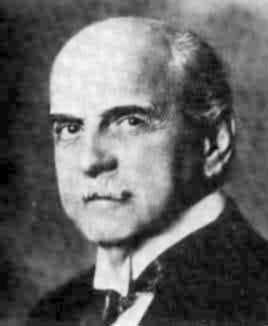
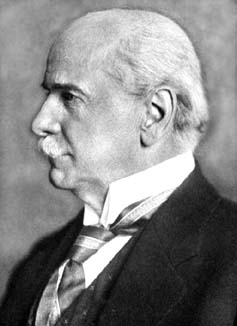
Perhaps we should first comment that Walther von Dyck was not known by precisely that name in his youth, but rather by the name Walther Dyck. He was ennobled with the "von" only much later in his life.
Walther's father was Hermann Dyck while his mother was Marie Royko. Hermann Dyck was a painter and he was the Director of the Kunstgewerbeschule in Berlin, that is the Berlin School of Industrial Art. Walther certainly inherited his father's artistic abilities but in addition he had a wide range of skills across the arts and sciences.
He studied at a number of German universities, which was the standard pattern for students at that time. After beginning his studies at the University of Munich, he then spent time studying at the Universities of Berlin and Leipzig. He received his doctorate from Munich in 1879 for a thesis entitled Über regulär verzweigte Riemannsche Flächen und die durch sie definierten Irrationalitäten. His thesis supervisor was Klein who had been appointed to a chair at the Technische Hochschule at Munich a few years before in 1875.
In 1880 Klein left Munich to take up the chair of geometry at Leipzig. Dyck went to Leipzig to take up a position as Klein's assistant and there he submitted his habilitation thesis, receiving the university lecturing qualification in 1882. During this period Dyck made important contributions to group theory with the publication of two papers; Gruppentheoretische Studien in Mathematische Annalen the first in 1882 and the second in the following year.
Klein would remain at Leipzig until 1886, but Dyck left two years before that when he was appointed professor at newly established Munich Polytechnikum. Hashagen studied Dyck's work at the Munich Polytechnikum. In particular he examined the way von Dyck tried to solve the problems which arose in the training of engineers. Von Dyck stressed how important a basic knowledge in mathematics was to engineers and he worked hard to construct a consistent course to include varied topics.
Dyck would remain at the Munich Polytechnikum for the rest of his career and gave outstanding service to it in many important ways. He was appointed Director of the Polytechnikum in 1900 and under his inspired leadership the institution rose to university status becoming the Technische Hochschule of Munich. He served as rector of the Technische Hochschule for two terms, the first from 1903 to 1906 and the second from 1919 to 1925.
There was another important project in which von Dyck played an important role. This was the creation of the Deutsches Museum of Natural Science and Technology. The idea was first suggested by Oskar von Miller who was an electrical engineer who was instrumental in setting up the electric power industry in Germany. In 1903 Miller enlisted the help of von Dyck and of Carl von Linde who had been appointed extraordinary professor of machine design at the Munich Polytechnikum in the same year as von Dyck was appointed. They proposed that a museum be built in Munich which would both preserve technological artefacts and let visitors learn about the scientific principles through interactive displays.
The Deutsches Museum was first of its kind and its ideas were soon copied by other science museums around the world. Not only was von Dyck one of the three to establish and develop the museum in its early stages, but he was also appointed as the second Director of the Museum in 1906.
Von Dyck made important contributions to function theory, group theory (where a fundamental result on group presentations is named after him), topology (where he was influenced by the work of Riemann), and to potential theory. He made significant contributions to the Gauss - Bonnet theorem.
Another important project which von Dyck undertook was one to publish the complete works of Kepler, including all Kepler's letters. He undertook this in his role as class secretary of the Bayerische Akademie der Wissenschaften in 1906. This project has extended well beyond von Dyck's lifetime with Volume 7 appearing in 1953, and Volume 8 in 1963.
Von Dyck's character and contribution are summed up as follows:-
Linguistically gifted and a warm, kind - hearted man of wide - ranging and liberal interests, including art and music, Dyck was an outstanding scholar and organizer and an enthusiastic and inspiring teacher.